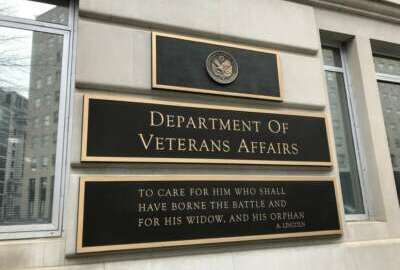
Congress wants more ‘walk,’ less ‘talk’ on diversity and inclusion efforts at VA
Employees worry recent initiatives designed to raise the profile of diversity and inclusion within the Department of Veterans Affairs won't trickle down to loca...
Best listening experience is on Chrome, Firefox or Safari. Subscribe to Federal Drive’s daily audio interviews on Apple Podcasts or PodcastOne.
The tone at the very top has changed, but Congress and some employees said the Department of Veterans Affairs needs to do more to remove what they see as systemic barriers for employees and veterans from diverse backgrounds.
Previously-banned diversity and inclusion training is back on, and VA, by and large, is reinstating official time and collective bargaining.
VA Secretary Denis McDonough ordered a 120-day review of inclusion, diversity, equity and accessibility within the department.
VA task forces are examining the department’s internal and external processes and are creating metrics that will track progress and measure success, Harvey Johnson, deputy assistant secretary for resolution management, diversity and inclusion, told the House Veterans Affairs Oversight and Investigations Committee.
At the very least, both Congress and VA employees see top Biden administration officials and new VA leadership talking about diversity and inclusion more often than their predecessors, but they’re looking for the department to translate the talk into concrete actions — the kind that are embedded within the organization.
“No matter what administration is in charge of the executive branch, no matter who is the secretary, Congress expects the department to prioritize workforce diversity, equity and inclusion for all workers,” Mark Takano (D-Calif.), chairman of the House Veterans Affairs Committee, said Thursday at a hearing on VA’s diversity and inclusion efforts. “I realize that we are still in the first few months of the secretary’s tenure at the department, and I know both from private conversations and his public statements that his values align with ensuring a diverse and inclusive VA workforce.”
But Dr. Sheila Elliott, president of the American Federation of Government Employees local representing workers at the VA medical center in Hampton, Virginia, said the message, even with the best intentions, often fails to reach mid-level managers at individual facilities.
“Sometimes we’re able to work together to make change and see progress, but far too often we hear wonderful talk from VA headquarters but fail to see grand ideas become reality on the ground,” she said.
VA employees received reasonable accommodation training within the last year, but Elliott said she didn’t notice a difference in the way the department processed and addressed employee requests.
“That tells me that we’re checking off boxes, but we’re not really addressing the root causes,” she said. “Our managers and our human resources people are not buying into it, and that needs to change.”
External veterans organizations recognize some resistance in parts of VA as well.
“We haven’t done enough historically. This goes beyond the last previous two administrations,” said Victor LaGroon, director and chairman of the Black Veterans Empowerment Council. “This is a system-wide issue, and it’s become a cultural issue, where there are people within the system who have worked there long enough that they don’t buy into change. We do recognize that some people know they can wait out an administration, so we do need to have a system in place that no matter who the secretary is or who the president is, this body can be assured that our veterans are being treated in an equitable way.”
While VA is reasonably diverse — 43% of employees are non-white and 61% are women — the department has often struggled to promote minorities to top career leadership positions.
Black and African American women make up nearly 17% of the VA workforce, but less than 6% hold senior career leadership positions.
White men make up 23% of the VA workforce, yet make up nearly 50% of the department’s senior career leaders, said Chris Pappas (D-N.H.), chairman of the House VA subcommittee.
According to the results of an AFGE information request, 40,578 Black employees applied for VA management positions in 2019, and 2.5% received the promotion. Another 17,257 Black employees applied for a VA management job in 2020, and again, 2.5% received the position, Elliott said.
Johnson acknowledged VA could do better to promote and prime diverse candidates for top leadership positions.
“None of us got the position we’re at without being groomed or mentored,” he said. “We have to look at how we’re selecting people for the senior executive candidate development program. How we are selecting them for … aspiring leader program and other leadership programs. We have to look at how we’re mentoring and grooming people at the lower grades up to 13. When you get to GS-13 and above, that’s where we tend to have less than favorable representation.”
VA isn’t the only agency that struggles in this area. Black federal employees make up 11% of the Senior Executive Service, but 18% of the non-SES workforce.
For Elliott, she’s seen small signs of improvement.
“The track is there. We have to get some speed going down that track. That’s where I see the issue. When we see someone coming in at a higher level who happens to be a person of color, quite frankly, at my facility we’re surprised sometimes.”
VA EEO counselors struggle to keep up with complaints
Part of the problem, both Congress, employees and other stakeholders acknowledge, is VA equal employment opportunity and diversity and inclusion programs don’t have enough bandwidth.
VA’s Office of Resolution Management, Diversity and Inclusion has one person responsible for conducting technical assistance reviews at hundreds of the department’s facilities across the country.
The office conducted a recent review, which included focus groups with employees and conversations with the union, at the Kansas City medical center. Johnson said the medical center is hiring a dedicated diversity and inclusion officer because of the review, and he attributed a rise in employee engagement scores at the facility to the work done there.
Ideally, VA would have more employees available to visit facilities and conduct technical assistance reviews, Johnson said. The department has five reviews planned and nine others in the works.
VA’s equal employment opportunity division is also hamstrung by an arbitrary cap, which limits the number of EEO counselors at the department. VA currently has 38 for a workforce of more than 400,000 employees, and those EEO counselors struggle to keep up with the number of formal and informal complaints they receive each year. In 2020, VA employees filed more than 2,800 formal equal employment opportunity complaints, and the department’s EEO counselors resolved a little more than half of them.
Reps. Conor Lamb (D-Pa.) and Tracey Mann (R-Kan.) introduced legislation that would lift the cap and allow VA to hire for and fill vacancies to expand the number of EEO counselors. If Congress passes the bill, VA would have between 80 and 90 EEO counselors, who could more proactively work with employees to address discrimination and harassment complaints, Johnson said.
Copyright © 2024 Federal News Network. All rights reserved. This website is not intended for users located within the European Economic Area.
Nicole Ogrysko is a reporter for Federal News Network focusing on the federal workforce and federal pay and benefits.
Follow @nogryskoWFED
Related Stories

AFGE accusing VA of not promoting enough minorities to management positions




